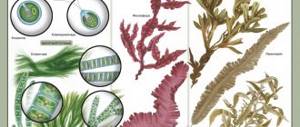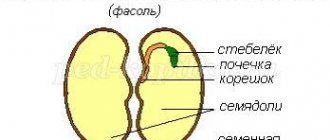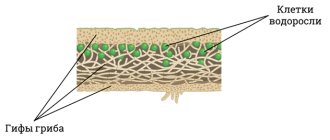General characteristics of mollusks
Mysterious and terrible octopuses have become the heroes of many legends and incredible stories. Modern directors have not ignored them and have created many films about these creatures.
Film "Tentacles"
Are these creatures so terrible and dangerous? Where is the truth and where is the fiction? Let's dwell on these mysterious animals and get to know them better.
All these unusual animals belong to mollusks. It is a numerous phylum of animals, comprising approximately 130,000 organisms. It would seem that these organisms can only be found in the seas and oceans. However, this is not true at all! Take a walk along the river bank and you will meet toothless and barley. Pond snails are often found in lakes. In the garden and vegetable garden you can find slugs and snails.
Types of terrestrial mollusks
Regardless of the habitat, all representatives of this type have common features.
The body of the mollusks is soft, hence the name of the type, translated from Latin, soft-bodied. Often the soft body is covered with a shell. Depending on the presence and shape of the shell, mollusks are divided into three classes.
Classes of mollusks
Mollusks have a muscular body, on which you can see the head, torso and legs. The head of the mollusk bears a mouth opening, eyes, and tentacles. Not all organisms of the type have a head; for example, in bivalves it is reduced, that is, it disappeared during the process of evolution.
In mollusks, the leg is capable of performing various functions, so there are several types of legs. The external shape of the legs can be seen in the figure.
External structure of mollusks
The foot of bivalves is similar to a tongue. With its help, they slowly move along the bottom of the reservoir, digging sand or silt at the bottom of the reservoir.
In gastropods, the foot has the appearance of a sole, very similar to the human foot. The name of these mollusks seems to tell us that “the leg grows from the belly,” that is, it is a continuation of the body. The mollusk crawls on its leg, leaving behind a slimy trail.
In cephalopods, the leg has evolved into tentacles that surround the head. This is where all the legends about the octopus with a lot of tentacles come from.
Most mollusks are enclosed in a shell that has various shapes. The structure of a mollusk shell is shown in the figure.
Internal structure of the shell
Mollusk shells vary in appearance; each class has its own type. A shell consisting of two valves is characteristic of bivalves. Gastropods have a single-valve, spiral-curled shell. Cephalopods are characterized by the absence of a shell.
All mollusks are so different from each other, but, like all living organisms, they are characterized by the presence of internal organs. General characteristics of classes of mollusks make it possible to identify common features in the structure of the main organ systems.
- At the beginning of the lesson, we became acquainted with not only aquatic but also terrestrial mollusks. The breathing process should be different for them. Some breathe oxygen from the air, while others breathe oxygen dissolved in water. Let's get acquainted with the respiratory organs in the figure below.
Respiratory organs of mollusks
- The circulatory organs are a “transport” system that delivers nutrients to all organs. Represented by the heart and blood vessels, which are not closed.
- The set of digestive organs depends on the type of nutrition of mollusks.
Bivalve mollusks are considered filter feeders, and this type of nutrition led to the disappearance of their heads in the process of evolution.
Herbivorous and predatory forms have a special formation - a grater. This type of nutrition is typical for gastropods and cephalopods.
Digestive system of gastropods and cephalopods
- The interconnection of all organ systems is carried out by the nervous system. It is most complex in cephalopods.
Nervous system of the main classes of Mollusks
- The reproductive organs of mollusks are represented by a pair of gonads. Of particular interest are the methods of reproduction of mollusks of different classes. Bivalves and cephalopods are dioecious, while gastropods are hermaphrodites. The latter have a copulatory organ and a special vesicle filled with sperm - a spermatophore. The reproduction and development of bivalves differs from all other classes.
Life cycle of a bivalve mollusk
Males release sperm into the water, and through the introductory siphon or mouth opening they enter the female’s body. This is where fertilization occurs. The eggs hatch into larvae - glochidia, which enter the water through a siphon. The development of bivalve mollusk larvae occurs when the glochidium attaches to the gills or fin of a fish. This parasitic stage of mollusk development continues for some time. At a certain point in time, the tumor breaks through and the young mollusk begins a free existence.
Gastropods have their own reproductive characteristics. In the spring, copulation or mating of individuals occurs. Sperm enter the cloaca – the excretory or “anal” opening, where fertilization occurs. The eggs are covered with a protein shell, the walls of which contain lime.
Developmental cycle of gastropods
After fertilization, the snail digs out a small hole with its foot, where it lays up to 100 eggs. After a few weeks, young snails hatch.
In cephalopods, fertilization is internal, and the role of the copulatory organ is played by one of the tentacles, which transfers sperm to the female genital opening. This is where fertilization takes place.
The eggs emerge from the body of the mollusk and attach to various underwater objects. The development of mollusks occurs in the aquatic environment.
Type of shellfish (soft-bodied)
Mollusks (from the Latin molluscus - soft) or otherwise soft-bodied - three-layered protostomed multicellular animals with bilateral (bilateral) symmetry and an unsegmented body. The number of species ranges from 100 to 200 thousand. Mollusks descended from annelids and are a dead-end branch of evolution.
The science of mollusks is called malacology, and the science of shells is conchiology, so by the end of this chapter you will be able to master two specialties at once: become both a malacologist and a conchiologist 
Mollusks appeared at the beginning of the Cambrian period. They are traditionally divided into three classes: gastropods, bivalves, and cephalopods (and several other classes that are inappropriate to consider at this time).
After studying the classification, it is time to talk about aromorphoses. These are the morphophysiological traits that increased their level of organization and allowed them to occupy new ecological niches.
Aromorphoses of mollusks
- Merging body segments into departments
- Nerve nodes in parts of the body
- Heart
- Digestive glands
- Sink
The body of mollusks consists of a trunk, head and legs, with well-developed muscles. This merging of segments into departments enhances the functional significance of the organs.
The nervous system of mollusks is generally well developed, and in cephalopods, in general, the structure of the nervous system is considered one of the most complex among invertebrates.
The appearance of the heart helps accelerate blood flow, which increases the efficiency of metabolic processes in the organs and tissues of the mollusk.
Mollusks are distinguished by the presence of special digestive glands, of which the largest is the liver. Food in their gastrointestinal tract is broken down better and more intensively, digestion proceeds faster.
Shell (lat. concha) is an external protective skeletal formation covering the body of most mollusks. Protects the soft body of mollusks from enemies, mechanical damage, and prevents moisture evaporation.
In mollusks, the outer layer of the shell is organic, and the next two (porcelain-like and mother-of-pearl) are calcareous.
The structure of each class of mollusks will be studied in detail by us in the corresponding section; an interesting journey awaits you and me, during which we will temporarily turn into these ancient organisms 
© Bellevich Yuri Sergeevich 2018-2020
This article was written by Yuri Sergeevich Bellevich and is his intellectual property. Copying, distribution (including by copying to other sites and resources on the Internet) or any other use of information and objects without the prior consent of the copyright holder is punishable by law. To obtain article materials and permission to use them, please contact Yuri Bellevich
.
Classification of mollusks
The phylum Mollusca includes seven classes, representing great external diversity. Let us dwell on the classes of bivalves and gastropods, which contain the species that are most common in our fauna. In this classification, from marine mollusks we will analyze cephalopods, which have great biological interest.
Classification of the type Mollusks
- Class Bivalves – approximately 20,000 species.
The structure of bivalves justifies their name. Their body and leg are enclosed in a shell with two valves. These are sedentary, sluggish animals, calmly and slowly crawling along the bottom of freshwater bodies of water. In our rivers you can often find barnacles and toothless ones. They are used as a food product, and the shells are used as bird feed and as fertilizer.
Perlovitsa
Oysters are a special type of mollusk of this class. They lead a motionless life - the lower shell of the shell adheres to the bottom. Oysters settle in large communities, forming so-called oyster banks. The coasts of France, Ireland, and England are richest in these organisms. In Russia they are found in the Black Sea, together with mussels they are objects of marine fishing.
Oyster Colony
- The class Gastropods is represented by 75,000 species and is considered the most numerous in the phylum Mollusca. Among the large number of species, the marine types have become the most famous due to their beautiful shells. These shells represent the external skeleton of gastropods. Organ systems are the most developed of all classes in gastropods.
Let us dwell on the classification of gastropods; three subclasses are distinguished depending on the type and location of the respiratory organs.
Classification of Gastropods
Clam shells are used in the jewelry industry. The grape snail is used as food in some countries. Slugs are pests of cultivated plants. Some representatives can be intermediate hosts for parasitic worms. For example, the larvae of the liver fluke develop in a small pond snail.
- Class Cephalopods - about 650 species. The structure of cephalopods is somewhat different from all others. Their body is more complex. The head is surrounded by 8 to 10 tentacles. The circulatory system of cephalopods is closed; blue hemolymph flows through the vessels.
This class now has an unusual means of defense - the “ink bomb”. In the body of cephalopods there is an ink sac with a special substance - ink. The mollusk, upon seeing an enemy, darkens and throws out ink that colors the water.
Black cuttlefish throwing out ink
This “smoke screen” allows you to hide unnoticed from the enemy, who cannot smell the smell of other animals for a long time.
The most famous modern species of cephalopods are octopuses, cuttlefish and squids. Contrary to all stories and legends, the largest individuals reach 3 m in length.
There are very few facts of attacks on humans in history. This can only happen to a diver or scuba diver when inspecting sunken ships. Cephalopods use the dark corners of such ships as a refuge. Having met one-on-one with a person, he has nowhere to go, and he attacks - this is the mollusk’s way of self-defense.
All cephalopods have been used as food since ancient times, which is why they are objects of fishing.
General characteristics of the Mollusc type
Molluscs, or soft-bodied mollusks, comprise about 130 thousand species of animals that live in fresh and salt water; a number of species have adapted to life on land.
Protostomes, secondary animals. Animals of the phylum are grouped into several classes: the Gastropoda class, the Bivalvia class, and the Cephalopoda class. Animals of this type are characterized by the following morphophysiological features: External structure . Bilaterally symmetrical animals, but some species become asymmetrical due to the spiral twisting of the body. Metamerism is preserved only in a number of primitive species; in the rest, an unsegmented body is formed, consisting in most of the head, torso and legs;
Secondocavity animals ; the coelom cavities contain the heart and gonads. The body forms the mantle, the mantle cavity contains the respiratory organs, and the excretory, reproductive and digestive systems open into it. On the dorsal side there is usually a protective shell; in the pharynx of most mollusks there is a radula, a grater for grinding food.
Nervous system . The central nervous system is scattered - nodal type. The circulatory system is not closed, there is a heart consisting of a ventricle and atria, sometimes additional hearts appear. Respiratory system . Respiratory organs - gills or lungs. Excretory system . The excretory organs are represented by one or two kidneys of the metanephridial type. Reproduction . Many mollusks are dioecious, but there are also hermaphrodites. Development is direct or with transformation, the larva in the lower ones is a trochophore, in most others it is a veliger larva.
Phylogeny . Mollusks appeared at the end of the Proterozoic era from an unspecialized group of polychaete worms. The main aromorphoses that led to the appearance of mollusks are as follows: 1. Segments merge into a small number of body sections, each of which provides specific functions. 2. There was a further concentration of the nervous system - the formation of large nerve nodes in various parts of the body. 3. A heart appeared, which increased the speed of blood circulation, which significantly increased the intensity of metabolic processes. 4. Digestive glands appeared, ensuring faster and more complete digestion of food. 5. Shells were formed that act as an external or internal skeleton and protect mollusks.
General characteristics of echinoderms
Many people love to look at the starry sky. Did you know that there are stars not only in the sky? In the dark depths of the ocean you can see bizarre forms of echinoderms - stars, lilies, hedgehogs. Let's get acquainted with another type of sea inhabitants - Echinoderms.
The phylum Echinodermata includes sea inhabitants that are bottom-dwelling animals. There are about 6,500 species of these organisms. The surface of the body is covered with a calcareous skeleton, from which spines or needles extend. The radial or radial symmetry of the body is characteristic.
Radial symmetry of echinoderms
Only echinoderm animals have special organs of locomotion, the so-called water-vascular system. Its other name is the ambulacral system, translated from Latin ambulacrum - a place for walking, walking.
Ambulacral system of echinoderms
In addition to the three functions presented, this system of echinoderm tube-legs palpates various objects and is an organ of touch.
These animals of the bottom community are dioecious. They reproduce by eggs, from which hatch larvae that differ from the adult animal in bilateral symmetry. Subsequently, the larva develops, and it becomes similar to an adult echinoderm.
One more interesting feature should be noted in the characteristics of echinoderms. All representatives of the type are capable of regeneration, that is, restoration of lost body parts.





